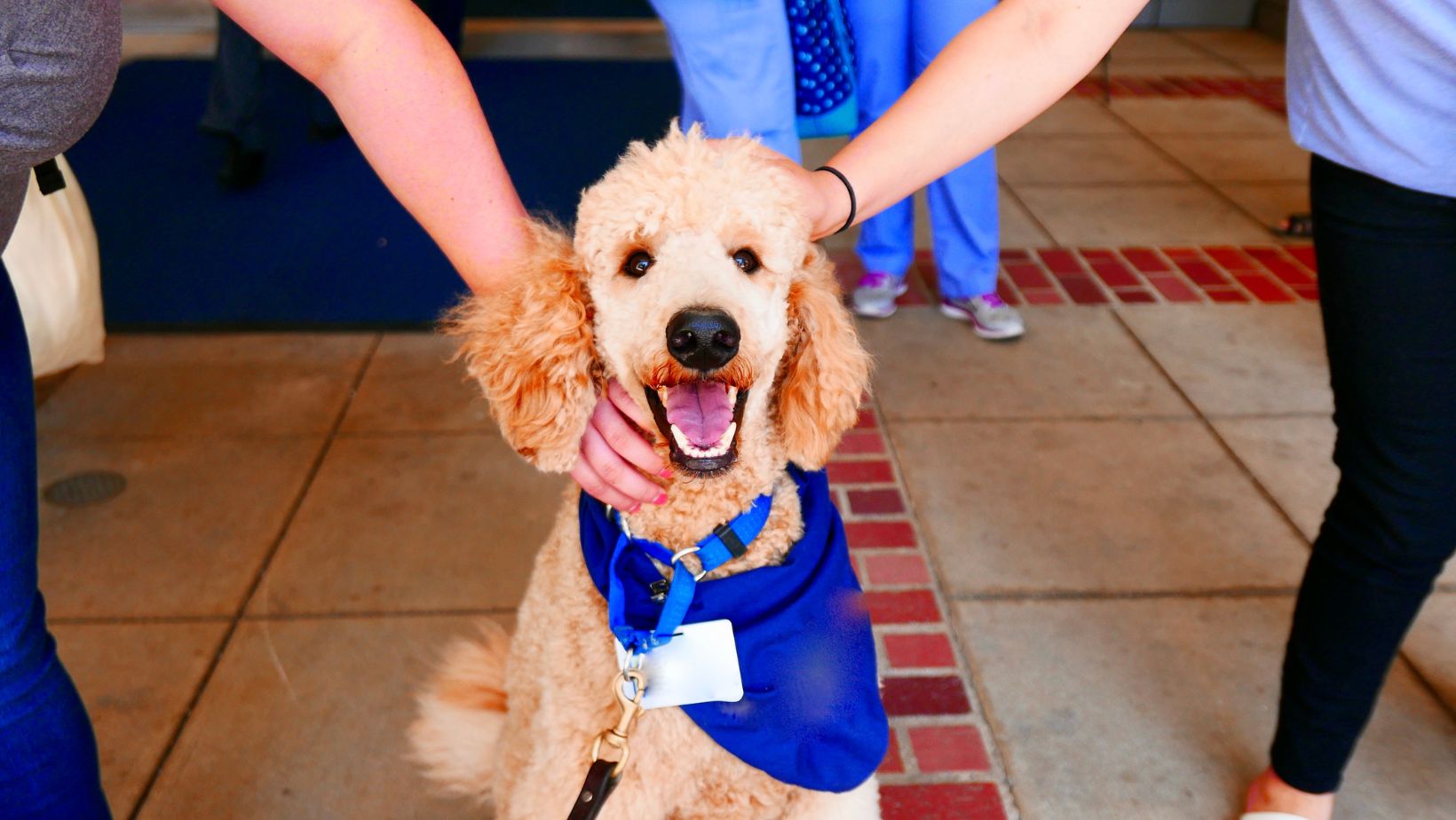Are you interested in learning how to train a dog to be a therapy dog? If so, you’ve come to the right place! In this article, I’ll guide you through the process of obtaining a certificate in training dogs for therapy work. Whether you’re an experienced dog trainer or just starting out, this certification will equip you with the knowledge and skills needed to prepare your furry friend for their important role as a therapy dog.
Therapy dogs play a vital role in providing comfort and companionship to people in need. They visit hospitals, nursing homes, schools, and other facilities where their presence can make a positive impact on people’s lives. By completing this certification program, you’ll gain insights into canine behavior, learn effective training techniques, and understand the specific requirements for therapy dogs.
How To Train a Dog To Be A Therapy Dog
how to train a dog to be a therapy dog
Benefits of Therapy Dogs
Therapy dogs play a crucial role in improving the well-being of individuals in various settings, including hospitals, nursing homes, schools, and rehabilitation centers. These furry companions offer a range of benefits that positively impact both physical and emotional health.
Firstly, therapy dogs have been shown to reduce stress levels. The simple act of petting a dog can help lower blood pressure and release endorphins, promoting relaxation and an overall sense of calm. This can be especially beneficial for patients undergoing medical treatments or individuals dealing with anxiety disorders.
Qualities Needed in a Therapy Dog
Not every dog is suited to become a therapy dog. Certain qualities are essential for these four-legged heroes to effectively carry out their duties:
- Temperament: A therapy dog must possess a calm and friendly temperament that allows them to remain composed even in busy or stressful environments.
- Patience: They should exhibit patience when interacting with different individuals who may have varying needs or limitations.
- Socialization: A well-socialized therapy dog should be comfortable around people of all ages, including children.
- Obedience: Basic obedience training is crucial for ensuring the safety and well-being of both the dog and those they interact with during therapy sessions.

Finding the Right Training Program for Your Dog
Choosing the Right Training Program
When it comes to training your dog to be a therapy dog, choosing the right training program is crucial. Not all programs are created equal, so it’s important to do your research and find one that aligns with your goals and values. Here are a few factors to consider:
- Methodology: Look for a training program that utilizes positive reinforcement techniques. These methods focus on rewarding desired behaviors rather than punishing unwanted ones, creating a positive learning environment for your furry friend.
- Experience and Credentials: Check if the trainers have experience working with therapy dogs or if they hold any relevant certifications. This can give you confidence in their ability to guide you and your dog through the training process.
- Curriculum: Take a closer look at the curriculum offered by different programs. Ensure that they cover essential skills such as obedience training, socialization, and behavior management techniques specific to therapy dogs.
Understanding Certification Requirements
Before enrolling in a training program, familiarize yourself with the certification requirements for therapy dogs in your area. Different organizations may have slightly different criteria, but most will expect certain basic qualifications from your dog:
- Temperament: Therapy dogs need to have a calm and friendly temperament. They should be comfortable around strangers, able to remain calm under various circumstances and display good manners.
- Obedience Skills: Basic obedience commands like sit, stay, come when called, and walking on a loose leash are essential for therapy dogs. They should respond reliably to these commands even in distracting environments.
- Health Evaluation: Many certification programs require dogs to pass a health evaluation conducted by a veterinarian. This ensures that they are up-to-date on vaccinations and free from any contagious diseases.
In conclusion, obtaining a certificate in how to train a dog to be a therapy dog can be an incredibly rewarding and valuable endeavor. Throughout this article, we have explored the benefits of therapy dogs, the training process, and the requirements for certification.